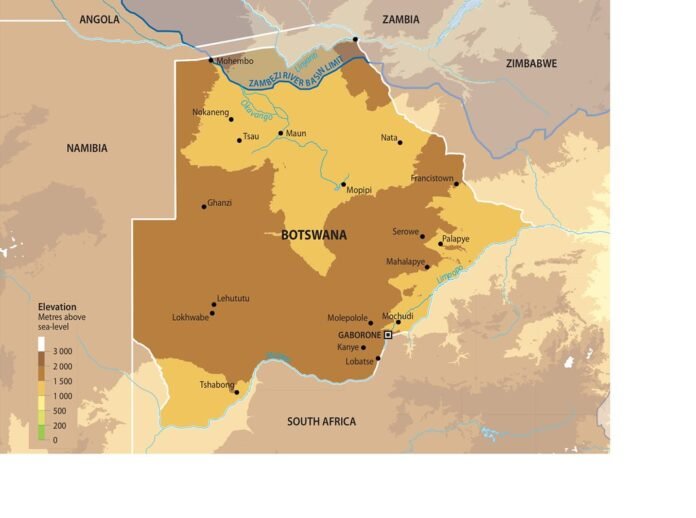Health insurance in the Republic of the Congo is structured into two primary categories: public and private. While both systems aim to increase access to healthcare, they differ significantly in funding, target demographics, coverage, and quality of care.
Public Health Insurance
The cornerstone of public healthcare in the Republic of the Congo is the Universal Health Insurance Scheme established under Law N°37-2014. This legislation aspires to provide health coverage across both public and private healthcare facilities for insured individuals and their dependents—excluding occupational illnesses and workplace accidents. The system is managed and funded by the government, ensuring that healthcare is available regardless of one’s financial standing.
In practice, however, the public health sector faces substantial challenges. Public hospitals, such as the General Hospital of Kinshasa and Clinique Ngaliema, are key providers but often lack adequate staff, equipment, and medicine. As a result, patients frequently resort to out-of-pocket payments even when nominally covered by public insurance. In addition, while government-funded programs focus on maternal and child health, infectious diseases, and primary care, their reach is limited.
Community-Based Health Insurance (CBHI) schemes—offered through Mutual Health Organizations (MHOs)—are another public initiative designed for the informal sector and low-income populations. Yet, due to their voluntary nature and low public awareness, these programs remain underutilized.
Private Health Insurance
In contrast, private health insurance in the Republic of the Congo caters mainly to expatriates, businesses, and affluent residents. Providers like Allianz Care, AXA, Cigna Global, IMG, and ASCOMA Congo offer diverse and customizable plans that include comprehensive inpatient and outpatient services, dental and optical care, wellness benefits, and emergency evacuation—an essential feature given the limitations of local medical infrastructure.
Private insurance plans generally offer faster access to higher-quality facilities and more specialized services, often outside the country. However, premiums are considerably higher, making private insurance inaccessible for the majority of the Congolese population.
Similarities and Key Overlaps
Despite their differences, both systems share some common goals: enhancing healthcare access, promoting financial protection, and covering services in both public and private facilities. Both also offer tiered options—whether through voluntary MHOs in the public sector or customizable plans in the private market—to cater to varying income levels and needs.
Top Public Health Insurance Options in the Republic of the Congo
The Republic of the Congo has a developing healthcare system with ongoing efforts by the government to improve public health insurance access. Unlike many countries with multiple public insurance providers, the Republic of the Congo primarily operates one national-level public health insurance scheme. There are limited alternatives within the public system, and private insurance plays a larger role for those seeking broader coverage. Below is a detailed look at the country’s public health insurance scheme.
1. Caisse Nationale d’Assurance Maladie et de Garantie Sociale (CNAMGS)(Official website: https://www.cnamgs.ga/)
Cost:
CNAMGS is funded primarily through employer and employee contributions, as well as government subsidies. Employees in the formal sector contribute around 4% to 6% of their salary, with employers contributing approximately 6% to 8%, depending on the income bracket and type of employment. For informal sector workers, voluntary enrollment is available, but premiums vary and are often unaffordable for low-income households.
Available Services/Coverage Features:
CNAMGS covers a range of medical services including general consultations, hospitalization, maternity care, essential surgeries, pediatric services, and medications listed on the national essential medicines list. Vaccination programs and preventive services are also supported through this scheme. However, coverage may be limited in rural areas due to the lack of medical infrastructure and specialists.
Open for All or Limited:
While CNAMGS is theoretically open to all Congolese citizens, in practice, coverage is mostly accessible to formal sector workers, public employees, and a small percentage of the self-employed. Informal sector workers and rural residents often lack access or awareness of how to enroll, creating disparities in health coverage.
Core Financial Features:
- Co-payments: Minimal for most covered services, although some higher-cost treatments may require out-of-pocket contributions.
- Reimbursement System: Services are primarily accessed directly through affiliated public hospitals and clinics; direct reimbursement is less common.
- Subsidies: Heavily subsidized for vulnerable groups such as pregnant women, children under five, and retirees.
- Coverage Gap: Limited or no coverage for advanced diagnostics, chronic disease management, or services from private providers unless under special government programs.
Consumer Satisfaction Score:
On a scale of 1 to 10, CNAMGS receives an average satisfaction rating of 5.5, based on regional surveys and user feedback. Many beneficiaries appreciate the idea of public health insurance, but issues such as long wait times, medication shortages, and under-equipped facilities reduce overall satisfaction. Urban enrollees report a better experience compared to those in rural areas.
Public Health Insurance in the Republic of the Congo
The Republic of the Congo has implemented several public health insurance initiatives aimed at improving healthcare access and reducing out-of-pocket expenses. Below is an overview of the primary public health insurance mechanisms:
1. Universal Health Insurance Scheme (Law N°37-2014)(Official website: https://www.allianzcare.com/)
- Cost: Funded by the government through taxation and contributions from formal sector employees.
- Available Services/Coverage Features: Covers a comprehensive range of services in both public and private sectors, excluding industrial accidents and occupational diseases.
- Open for All or Limited: Intended for universal coverage; however, implementation is ongoing, and actual coverage is currently limited.
- Core Financial Features: Aims to reduce direct payments by citizens and pool risks across the population.
- Consumer Satisfaction Score: Data not available; however, challenges in implementation may affect satisfaction levels.
2. Public Hospitals Network(Official website: https://www.axaglobalhealthcare.com/en/)
- Cost: Services are subsidized, but patients often incur out-of-pocket expenses due to resource limitations.
- Available Services/Coverage Features: Provides essential medical services, including emergency care, maternal health, and infectious disease treatment.
- Open for All or Limited: Open to all citizens.
- Core Financial Features: Government-funded with support from international donors; however, funding is often insufficient.
- Consumer Satisfaction Score: Generally low due to understaffing and limited resources.
3. Government-Funded Health Programs(Official website: https://www.cignaglobal.com/)
- Cost: Free or low-cost services funded by the government and international partners.iCIMS
- Available Services/Coverage Features: Focus on maternal and child health, vaccination programs, and disease prevention.
- Open for All or Limited: Targeted at vulnerable populations, including women and children.
- Core Financial Features: Funded through government budgets and donor assistance.
- Consumer Satisfaction Score: Moderate, with appreciation for free services but concerns about availability and quality.
4. Employer-Provided Health Benefits (Public Sector)(Official website: https://www.imglobal.com/)
- Cost: Funded by the government as part of employee compensation.
- Available Services/Coverage Features: Includes medical consultations, hospitalization, and medications.IMG Global
- Open for All or Limited: Limited to public sector employees and their dependents.
- Core Financial Features: Fully subsidized by the government for eligible employees.
- Consumer Satisfaction Score: Relatively high among beneficiaries due to comprehensive coverage.
5. Community-Based Health Insurance (CBHI)(Official website: https://ascoma.com/en/ascoma-congo-2/)
- Cost: Members pay small, regular contributions.BMJ Global Health
- Available Services/Coverage Features: Basic healthcare services, including outpatient care and essential medications.
- Open for All or Limited: Voluntary enrollment, primarily targeting informal sector workers and rural populations.
- Core Financial Features: Operates on risk pooling within communities to reduce individual financial burden.
- Consumer Satisfaction Score: Varies; some communities report improved access, while others face challenges in fund management and service quality.
Overall, while the Republic of the Congo has established multiple public health insurance mechanisms, challenges such as limited funding, resource constraints, and implementation hurdles affect the effectiveness and satisfaction levels of these programs.
READ MORE: Private and public health insurance of Union of Comoros (Make informed choices)


